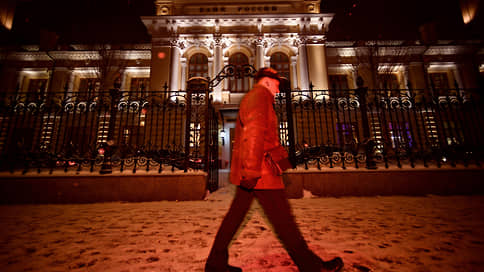The consumer sentiment index reached an all-time high in January
[ad_1]

The consumer sentiment index determined by the Bank of Russia in January updated its historical maximum, indicating abnormally high household spending for the first month of the year. In January, the population was especially active in spending on entertainment, gifts and eating out. Indirect indicators indicate that the population’s interest in already habitual spending under the pressure of the anti-inflationary policy pursued by the Central Bank is weakening with difficulty. Meanwhile, consumer goods makers lowered their expectations and current estimates for both output and demand in January.
The Central Bank’s consumer sentiment index in January added 6.4 points (and 6.8 points in annual terms) and rose to 108.2 points (.pdf). This is “above the typical positive seasonality for the first month of the year,” the Central Bank noted. The average change in January over December from 2015 to 2023 was plus 2.6 points. The indicator has updated its historical maximum; both assessments of the current state and expectations regarding personal well-being and economic prospects of the country have increased. The share of respondents who preferred to spend free money on the purchase of expensive goods rather than saving them increased in January to 30.6% – by 3.5 percentage points (pp.) per month and by 2.6 pp. on an annual basis. expression. The share of those who preferred to save remained virtually unchanged compared to the previous month and amounted to 51.6% (minus 0.2 percentage points and minus 3.3 percentage points, respectively).
The Central Bank data confirms what was previously shown (see. “Kommersant” from January 17) leading indicators of Romir and Sberbank – in January, private consumption remained at abnormally high levels for this month.
According to Sberindex, in the week of January 22–28, nominal expenses of Sber card holders increased by 16.1% (real – by 8.2%) in annual terms. According to Romir for the same period, expenses increased by 25.9%.
After a dip in the first week of January, consumption spending was at the level of the first two weeks of November 2023. Romir’s research on consumer confidence, as well as the dynamics of spending according to Sberindex, record an increase in the volume and frequency of consumer spending on culture and entertainment. “Our compatriots, in search of entertainment, have actively switched to classic leisure activities, such as visiting theaters, exhibitions, museums, various quests, and so on. Despite rising prices, there is an increase in the audience of such events and the frequency of visits. Year on year, ticket sales increased by 12% in monetary terms, the number of tickets sold over the year increased by 30%. An increase in these trends was noted towards the end of the year,” the researchers note. Another type of active spending is gifts, restaurants, takeout and restaurants.
According to the Ministry of Economy, the turnover of retail trade, public catering and paid services to the population last November increased by 8.9% in annual real terms, and excluding seasonality, the growth for the month was 0.6% against an increase of 1.1% in October 2023 of the year. Similar estimates demonstrating the stabilization of private consumption at the highest level since the beginning of 2020 in October-November were previously made by the Center for Macroeconomic Analysis and Short-Term Forecasting.
Saving sentiment, as well as cash foreign currency savings and the volume of bank deposits of individuals, are growing, and the rebound in the dynamics of issuing consumer loans (minus 1.9% for December 2023) is explained by the “repackaging” of loans by 250 billion rubles. into bonds, note the authors of the MMI Telegram channel. Without taking into account this transaction, credit to the population did not change (minus 0.1% and plus 15.7% in annual terms), although unsecured lending, unlike car loans, is shrinking. This dynamics suggests that the slowdown in consumer credit is not about the demand for credit, but about the banks’ reaction to the tightening of monetary policy, experts say. “In other words, high rates did not greatly dampen people’s desire to live on credit, but banks limited the issuance of loans,” they note.
Meanwhile, surveys of companies conducted by the Bank of Russia in January record a slight correction in estimates of current demand from manufacturers of consumer goods (although it remains at a historically high level since the beginning of 2014) and a significant deterioration in respondents’ expectations both in terms of output and demand.
[ad_2]
Source link






